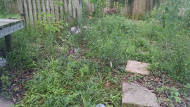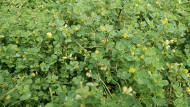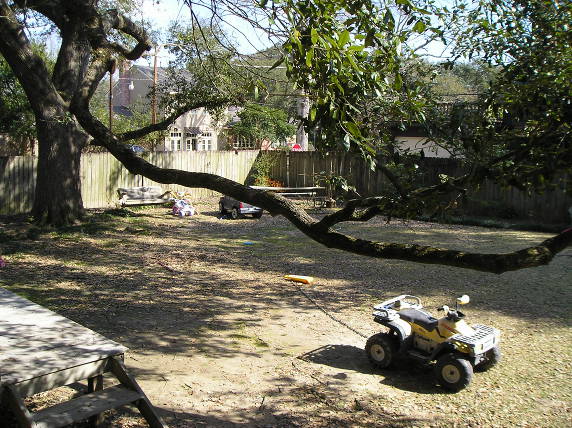A Better Sense of Place
Search for "exotic"
2015 June 29 (Mon)
Overgrown but not forgotten

It has rained pretty consistently for the past month and a half. Not non-stop. Just frequently enough that the ground hasn't dried out. So the weeds are taking over. The St. Augustine grass is growing fast and tall and sending out stolons everywhere. Camphor, Chinese tallow, chamberbitter, low hop clover, and some crap exotic grasses are sprouting faster than I can remove them. There are a lot more dormant seeds in the yard than I expected. I can't imagine ever getting the yard to a state of natives consistently crowding out exotics.
2015 March 22 (Sun)
Spring weeds eternal

In my last post, I mentionned that the area I hoed and bordered between the sidewalk and the street is overtaken by exotic invasives. Yesterday, I was standing over it and wondering how to kill it back so that the seeds I sowed in October could sprout and see sunlight. But this morning, I was thinking that maybe it's a useful cover crop that I should live with until it dies from the heat. For this post, I've picked out seven plants, including the aforementionned exotic, that come back year after year to my yard in early spring. I think I've identified them all, and putting a name to a plant helps to understand where it's from and what it's doing. (Spoiler alert: only two are native.)
2014 November 28 (Fri)
Four years of stumbling

Plants grow so slowly, I have to actively remind myself of how far I've managed to restore the land and ecology. I've been planning a new blog post for a month or so, and I was initially only going to look at what I've planted and sowed in 2014. But this morning I thought it might be more interesting to compare 2014 to 2012 and 2013 to see if there's an interesting progression. (There is.) And to really make it interesting, I decided to compare now to how the land was handed to me when we bought it back in 2010. ("Bought" is the legal term that I may as well continue using for convenience.)
2014 October 25 (Sat)
Exotics that I haven't killed yet

I've planted and left alone species fairly native to my parish and I've pulled up many an exotic from the ground, but there are still many larger individuals in the yard that are definitely not from 'round these parts. I thought it'd be a good exercise to write about them and why I haven't killed them yet. I also list alternatives that I would plant instead (and which are not necessarily what native appears the most similar).